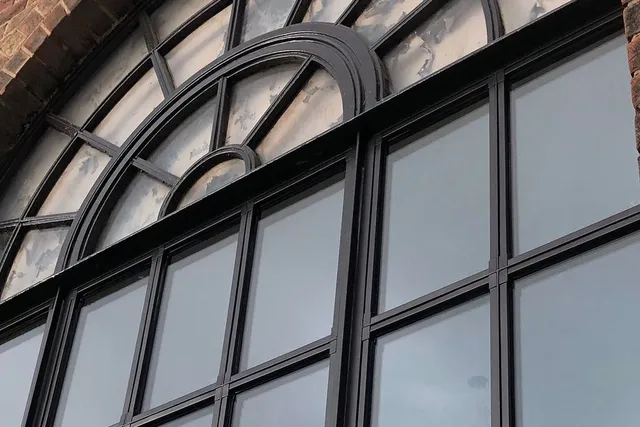Steel windows and doors have a long and fascinating history in architecture. From their invention in the 19th century to their modern-day use in commercial and residential settings, steel windows and doors continue to be a timeless and prominent feature in architectural design. This article will explore the history of steel windows and doors, their relevance in modern architecture, and how they are now being used in interior applications.
The Invention of Steel Windows and Doors
The development of steel and iron construction methods in the 19th century was a significant innovation in architecture [2]. This led to the creation of steel windows and doors, which provided stronger and taller structures with less material expenditure than traditional building materials such as wood, brick, or stone. Steel windows and doors were initially used for their strength and durability, making them popular in industrial and commercial buildings.
Nonetheless, between 1912 and 1964, the most prolific steel window section was called the Universal Range of profiles, with a small, medium, and large Universal Range. “This was a worldwide system available to many window manufacturers at the time, not just the largest, such as our company.” [1]
The Relevance of Steel Windows and Doors in Modern Architecture
While window designs have long varied in opening size, sash pattern, and shape, they remained largely made from wood until the early 20th century when steel and aluminum became feasible material options. Around the same time, insulated glass units, curtain walls, and glass block came onto the scene, taking off in use following World War II. [3]
Today, steel windows and doors are an essential part of modern architecture, adding a timeless and sophisticated look to buildings. They are a popular choice for commercial and residential buildings because of their durability, strength, and ability to allow natural light to penetrate the interior space.
Steel Windows and Doors in Interior Applications

Steel windows and doors are not just limited to exterior applications; they are also being used extensively in interior applications. Steel-framed glass partitions and doors have become popular in office and residential settings to create an open and modern look. The use of steel windows and doors in interior spaces allows for more light to enter and gives a sense of spaciousness to the area. They also add a touch of elegance and sophistication to any space.
Steel windows and doors can also be used to create a dramatic and unique statement in a home or commercial space. They can be customized to fit any design style, from industrial to modern and contemporary. Steel windows and doors are also available in a variety of finishes, including black, bronze, and white, making them a versatile option for any interior application.
Conclusion
In conclusion, steel windows and doors have been an essential part of architectural design since their invention in the 19th century. They continue to be a popular choice in modern architecture, adding strength, durability, and sophistication to buildings. Steel windows and doors are not just limited to exterior applications; they are also being used extensively in interior applications to create an open and modern look. With their versatility and customization options, steel windows and doors will continue to be a timeless and prominent feature in architectural design for years to come.
Discover More: Interested in learning more about our luxury steel framed glass doors and their many applications? Explore our Portfolio for inspiration and see how our products, including Swing/Hinge Doors, Bi-fold Doors, Pocketing Doors, and Partitions, can transform your space. For expert advice and a personalized consultation, visit our Contact Us page. Don’t forget to subscribe to our blog for the latest design trends, project showcases, and industry insights!


Recent Comments